Books
Books

Practice Space
This publication emerges from an effort to better understand the conditions of contemporary art in disparate places. Featuring new writings in a variety of discursive forms (commissioned essays, conversations, profiles), the book is organised around three key terms: local time, situated infrastructure, and “cotranslations”.
Furthermore, it gathers perspectives and approaches to “the local” from art initiatives that operate outside of conventional frameworks. As the authors consider place and context in terms of social, economic, political, and historical circumstances, their writings also reflect upon these notions as sites for different conceptions of the self in relation to the world.
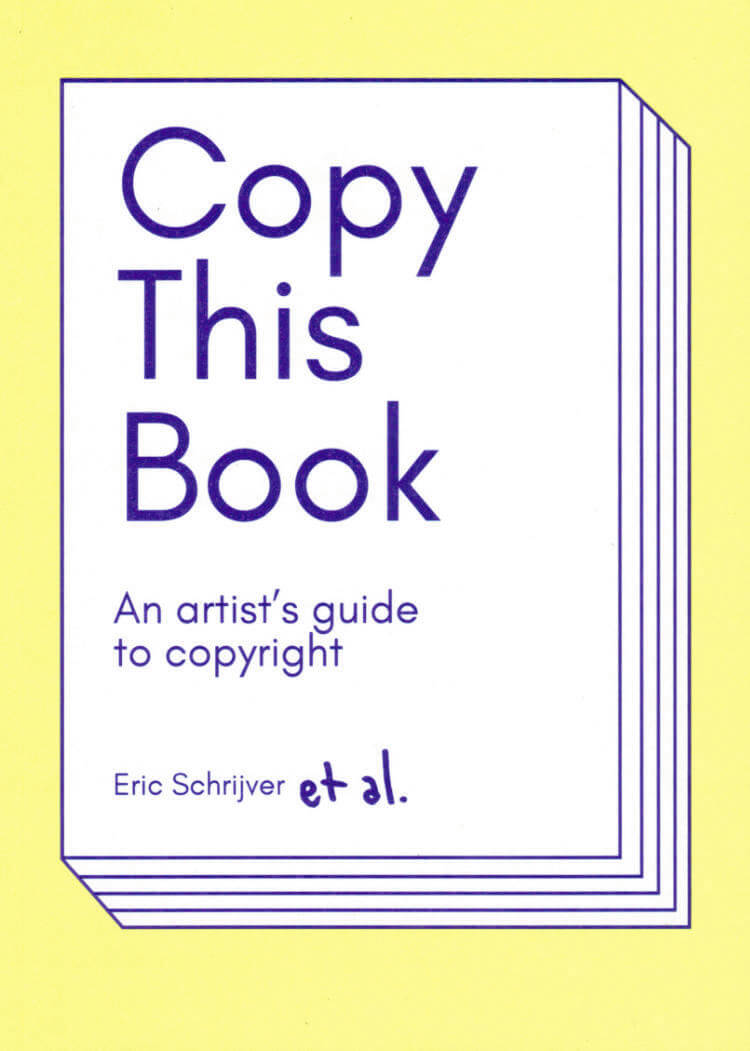
Copy This Book
This book is an artist’s guide to copyright, written for makers. Both practical and critical, this book will guide you through the concepts underlying copyright and how they apply in your practice.
How do you get copyright? For what work? And for how long? How does copyright move across mediums, and how can you go about integrating the work of others? Because they get copyright too!
Copy this Book will detail the concepts of authorship and original creation that underlie our legal system. This way, it will equip you with the conceptual keys to participate in the debate on intellectual property today.
This sharp and useful book shines a light on the rights of all artists to protect—and share—their work. Eric Schrijver has produced an essential guide for navigating the new Commons and the old laws of copyright control.
— Ellen Lupton, curator and critic

Le Chauffage — Issue #1
Le Chauffage (french for “The Heater”) is an artist-run publication based in Brussels. It is conceived as a cross-continental, community oriented platform. Bringing together the work and writing of artists / friends from different cities, Le Chauffage intends to spark discussions and fuel casual forms of critical discourse.

Mystic Transport
Mystic Transport is an exhibition project initiated through a chance encounter between two artists, Koen Theys and Gülsün Karamustafa. Both are very much intertwined with the city they live in; Brussels and Istanbul and integrate visible and invisible materials and remnants from their immediate surroundings within their practice.
Intrigued by religious parades, the hamam, war propaganda, gender issues and the entertainment industry, Theys and Karamustafa use these phenomena as starting points for their video work, installations and performances. In doing so, both artists sketch a critical portrait of the society and culture in which we live and reside, reflecting on cultural canons and differing socio-economic realities. Mystic Transport thus results in unique crossovers.

Els Dietvorst E.D. (2010–2014)
This publication presents a survey of the work of Els Dietvorst from 2010 to 2014. This is also the period in which she left Brussels to live in a village on the south-east coast of Ireland, where she focused on projects such as The Black Lamb. The audio piece One was killed for beauty, another one was shot, the two others died naturally is included on an audio CD.
Els Dietvorst E.D. (2010–2014), Rolf Quaghebeur, Eva Wittocx, Katleen Weyts, Els Dietvorst, Brussels, 2014.
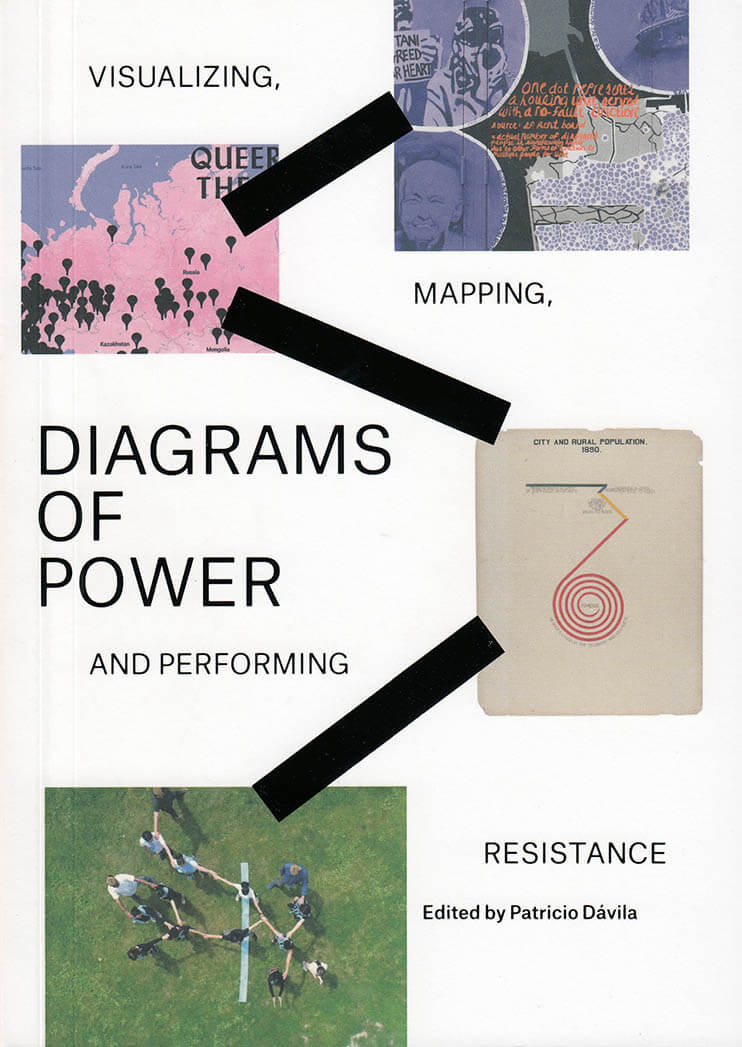
Diagrams of Power
Diagrams of Power: Visualizing, Mapping, and Performing Resistance, brings together the work of designers, artists, cartographers, geographers, researchers and activists who create diagrams to tell inconvenient stories that upset and resist the status quo.
Edited by Patricio Dávila. Words and works by Joshua Akers, Burak Arikan, Josh Begley, Joseph Beuys, Alexis Bhagat, Vincent Brown, Bureau d’Études, Teddy Cruz, Department of Unusual Certainties, Peter Hall, Alex Hill, W.E.B. DuBois, Patricio Dávila, Catherine D’Ignazio, Forensic Architecture, Fonna Forman, Terra Graziani, Iconoclasistas, Lucas LaRochelle, Eliana MacDonald, Julie Mehretu, Lize Mogel, Ogimaa Mikana, Margaret Pearce, Laura Poitras, Philippe Rekacewicz, Sheila Sampath, and Visualizing Impact.

Actors and Extras
Thomas Trummer, Paul Willemsen
The publication Actors & Extras appears following the exhibition of the same name at Argos. Five authors highlight the theme of characterisation from various angles. Georges Didi-Huberman’s contribution People exposed, People as Extras explores how cinema represents the masses. Sven Lütticken highlights the performance tradition in the visual arts in relation to the producing of subjectivity. On the basis of the classic cinema, in Figures of the Extra, Paul Willemsen composes a typology of the extra and subsequently gives attention to the aberrant status of the extra in modern cinema and contemporary art.
Thomas Trummer’s Volonté Générale. Extras in Film and Democracy questions the responsibility of the anonymous individual. With The Passing Actor: Sketch of a Renaissance Jean-Louis Comolli analyses how the concept of acting in a documentary has a different interpretation than in a fiction film. The last part of the publication describes the selected works in the exhibition.
Texts by: Clemens von Wedemeyer, João Onofre, Mark Lewis, Mike Figgis, Jeremy Deller, Irina Botea, Christian Jankowski, Aernout Mik, Krassimir Terziev, Julika Rudelius

Aphasia
Aphasia is a work of art about racism and intolerance, exposing the banality and triviality of evil. The films challenges us to look (literally) more attentively and to question our own individual and collective position. Aphasia is a call, not for punishment or outrage about the crimes committed during colonial times, the Holocaust or the atrocities in Bosnia during the Yugoslavian wars. Rather, it is a call to break the collective silence, and to actually look at the blind spots that seem to have become a fundamental part of our European identity.
Texts by Branka Benčić, Berber Bevernage and Eline Mestdagh, Jelena Jureša, Barbara Matejčić, Asa Mendelsohn, Rolf Quaghebeur.

Video's 1972-1981
Published on the occasion of the frame by frame restauration by argos of the videos that visual artist Lili Dujourie made from 1972 to 1981. Essays by Jean Fisher and Dirk Lauwaert, 52 black and white plates of video stills.

In The Shadow Of Forward Motion
David Wojnarowicz's In the Shadow of Forward Motion was originally published as a photocopied zine/artist's book to accompany an exhibition of the same name at PPOW Gallery in 1989. Despite its meager print run of just 50 copies, the publication has garnered a legendary status, and for good reason.
In it we find, for the first time, Wojnarowicz's writing and visual art, two mediums for which he is renowned, playing off each other in equal measure. We glimpse the artist's now iconic mixed-media works, with motifs of ants, locomotives, money, tornados and dinosaurs, juxtaposed with journal-like texts or "notes towards a frame of reference" that examine historical and global mechanisms of power symbolized through the technology of their times.
Wojnarowicz uses the fractured experience of his day-to-day life (including dreams, which he recorded fastidiously) to expose these technologies as weapons of class, cultural and racial oppression. The artist's experience living with HIV is a constant subject of the work, used to shed light on the political and social mechanisms perpetuating discrimination against not only himself, but against women and people of color, who faced additional barriers in their efforts to receive treatment for the illness. Rooted in the maelstrom of art, politics, religion and civil rights of the 1980s, the book provides a startling glimpse into an American culture that we have not yet left behind. Félix Guattari provides an introduction.
Painter, photographer, writer, filmmaker, performance artist, songwriter and activist, David Wojnarowicz was born in Redbank, New Jersey, in 1954 and died of AIDS in New York in 1992. The author of five books—most famously Close to the Knives: A Memoir of Disintegration—Wojnarowicz attained national prominence as a writer and advocate for AIDS awareness, and for his stance against censorship.

The Against Nature Journal #1
Aimar Arriola, Grégory Castéra
THE AGAINST NATURE JOURNAL is a biannual arts and human rights magazine exploring “crime against nature” laws and their legacies, in print, in person, and online. Authors and readers from law, activism, social sciences, and the arts are brought together to foster dialogue on sexual and reproductive rights and rethink nature anew.
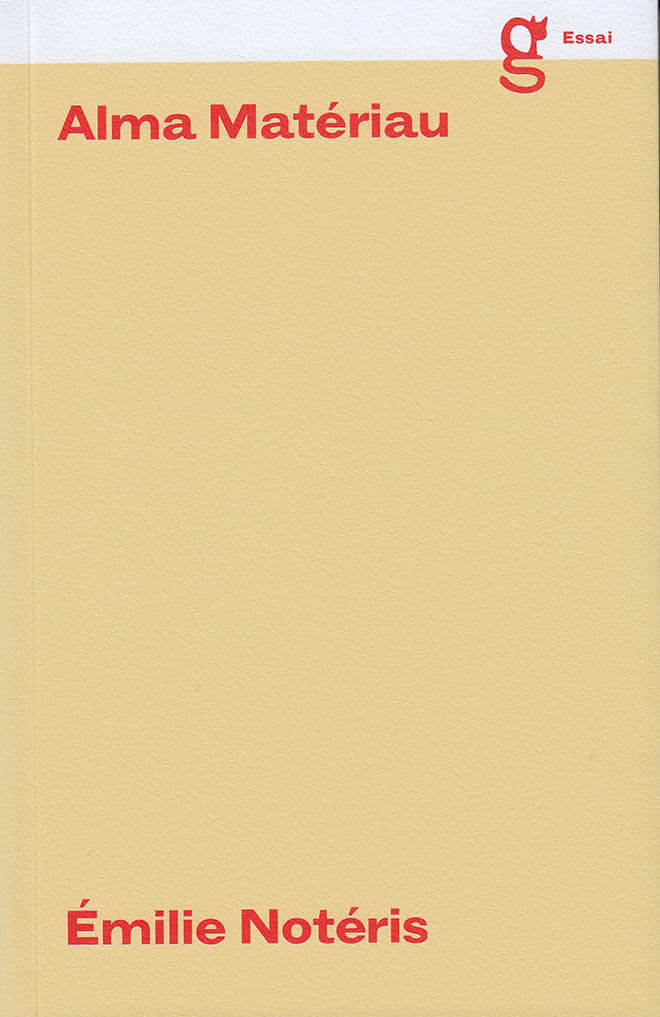
Alma Matériau
Émilie Notéris focuses her analysis on artworks created by women in the twentieth and twenty-first centuries, in a book that is at once literary, aesthetic and political.
On the occasion of its tenth anniversary, Paraguay creates a collection of essays and book-length interviews, published in, or translated into French. The books in this series are commissioned ones, books developed independently and freely, without a deadline. They articulate thoughts on art and political positions in the present through situated and experimental literary writing.
Émilie Notéris (born 1978) is an essayist, science fiction author, and translator.
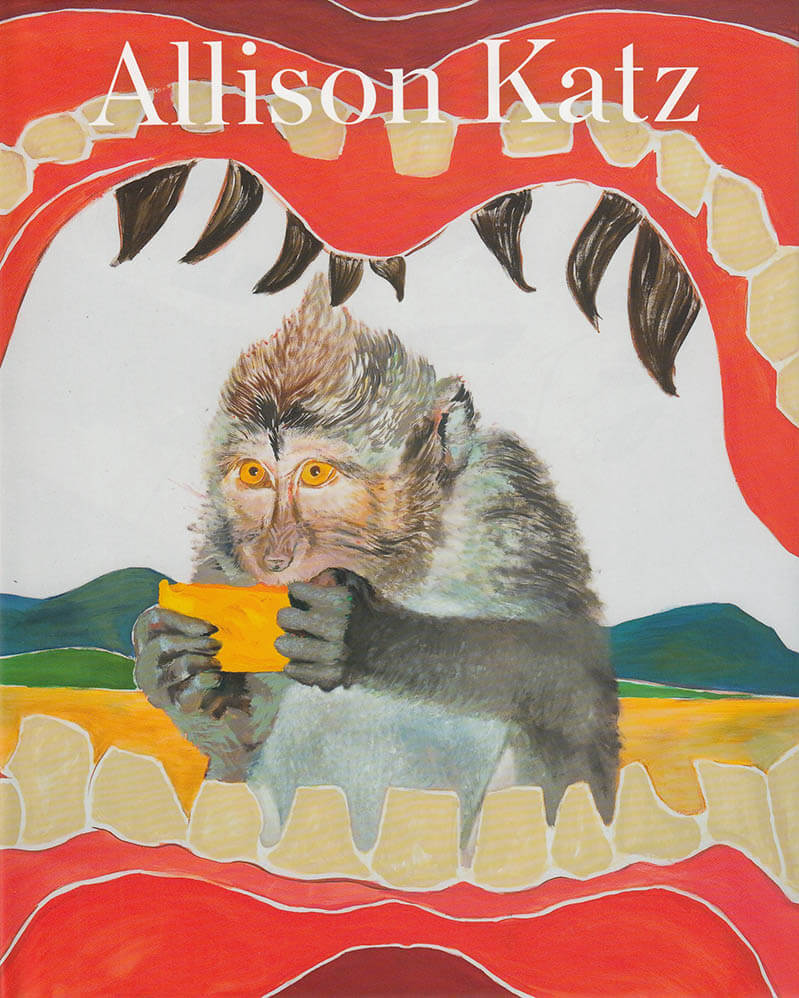
Alison Katz
This first comprehensive monograph encompasses the manifold painterly practice of Allison Katz. Gathering together Katz's successive bodies of works since the beginning of the 2010s, the publication includes essays by Oakville Galleries director Frances Loeffler, art critic Kirsty Bell, Canadian poet Lisa Robertson, and The MIT List Visual Arts Center Director Yuri Stone.
Texts by Kirsty Bell, Allison Katz, Frances Loeffler, Lisa Robertson, Yuri Stone, Camilla Wills.

Fatamorgana
Fatamorgana is both a political parody and a speculative comedy, in which historical and contemporary personalities narrate post–World War II global history and geopolitics, through a web of references and direct citations. The undercurrent is one of sense, illusion, and truth. Hanan — a Muslim cousin of James Joyce's Molly Bloom — finds herself, not sure how, in Beirut's Hall of Fame waxwork museum after its closing hours.
Like Homer's most virtuous Penelope, this woman waits for her husband; she appears to have set a date with him, but he has not arrived—where can he be? While waiting, she begins interacting with the wax figures in the museum's empty rooms, and the figures respond in turn. Blending and clashing sixteen differing languages, as well as a variety of fiction and nonfiction sources, Fatamorgana is a multidimensional space, a kind of experiment with truth, or a type of fiction that sets up a platform for the collision of multiple fragments, elements, stories, facts.
The publication is the final chapter in a longtime endeavor. Fatamorgana is a multiform project realized between 2016 and 2019, comprising a theatrical work, two films, two publications, and a sound installation. The current book is dedicated to the graphic translation of the text at the heart of the project, alongside a variety of related materials, including project notes and contributions from various authors, while providing online access to photographic, video, and sound materials, along with technical specifications for all of the project's component elements.

Cough Drop Circus
Josheph Dunkerley, Holly Miles
This collection of 20 poems by young poets Holly Miles and Joseph Dunkerley sheds a glimpse into the bizarre journey of two isolated souls in a time of global crisis. Read along in this 24 page zine as they chart their unique perspectives of the worldwide COVID-19 pandemic!
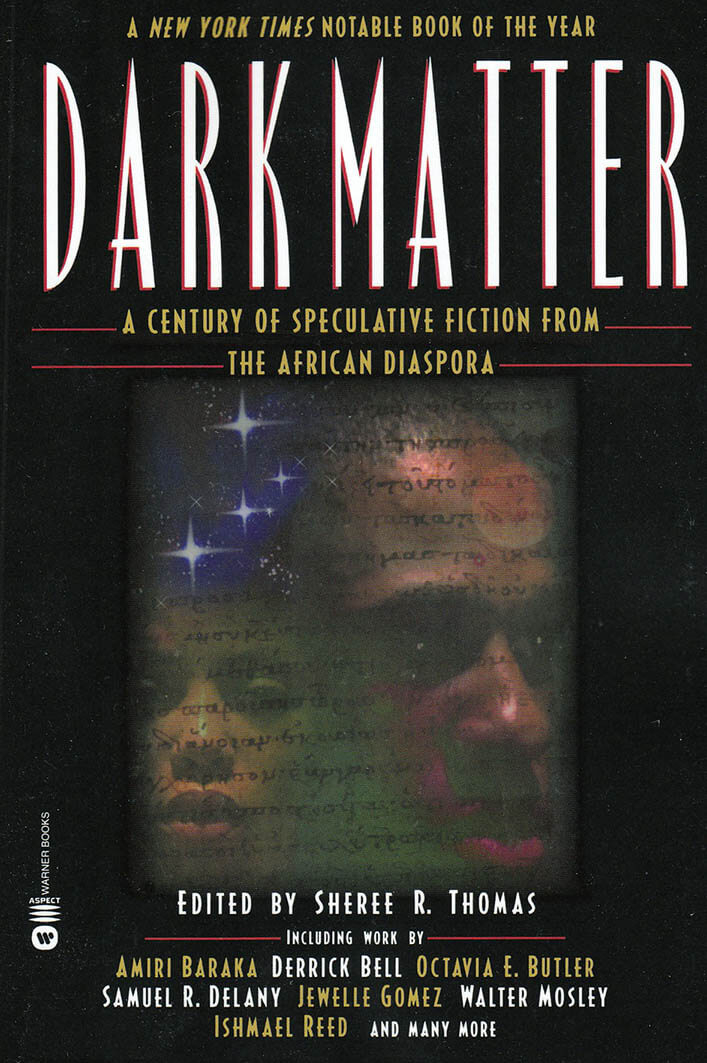
Dark Matter: A Century of Speculative Fiction from the African Diaspora
A Century of Speculative Fiction from the African Diaspora.
An important new anthology, the first of its kind, Dark Matter explores a century of fantastic fiction by preeminent and emerging luminaries of the African Disapora. A richly vibrant collection of stories and essays, it displays the brilliance of writers ranging from early pioneers such as W.E.B Du Bois, to famed authors including Samuel R. Delany and Octavia E. Butler, to such luminaries of the literary tradition as playwright-critic Amiri Baraka and satirist Ishmael Reed, as well as a spectrum of acclaimed new writers.
Astonishing, compelling, erotic, and profound stories of worlds within and beyond abound in Dark Matter. From the bittersweet legacies of Africa to utterly phantasmagoric future civilizations, here is a compliation of stories that transmute our human experience.
Published 2001.
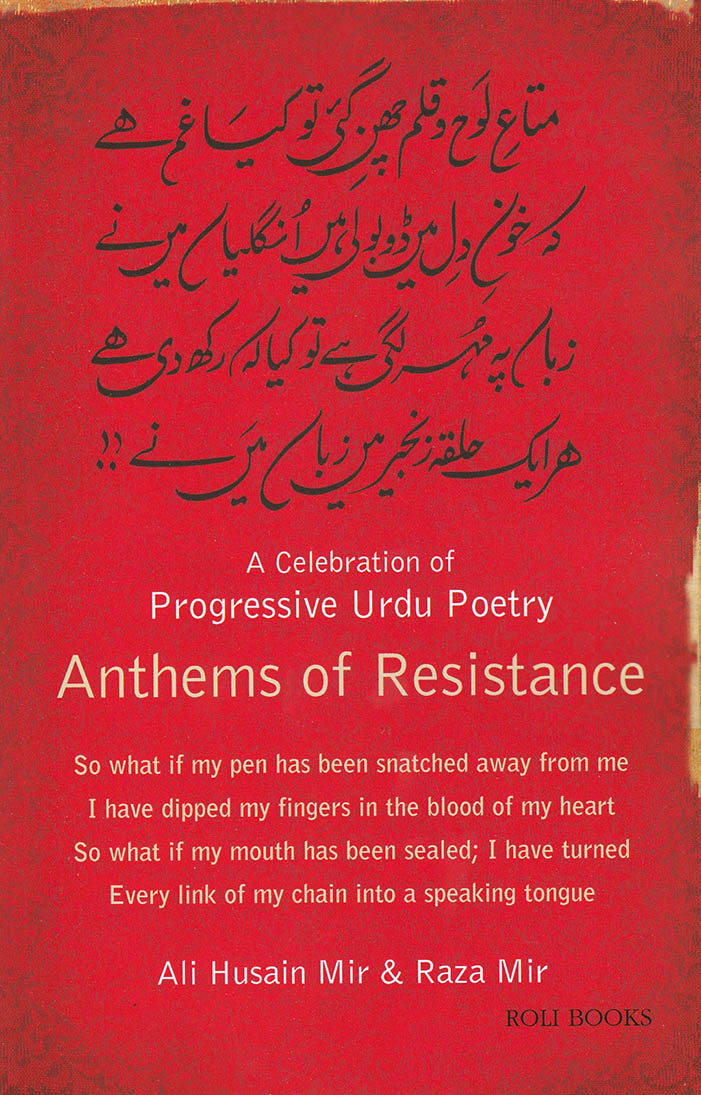
Anthems of Resistance: A Celebration of Progressive Urdu Poetry
Let a thousand verses bloom. Anthems of Resistance is about the iconoclastic tradition of poetry nurtured by Ali Sardar Jafri, Faiz Ahmad Faiz, Javed Akhtar, Fehmida Riyaz and all those who have been part of the progressive writers' movement in the Indian subcontinent. It documents the rise of the Progressive Writers' Association, its period of ascendancy, its crucial role in the struggle for independence, and its unflagging spirit of resistance against injustice. In the process, the book highlights various aspects of the PWA's aesthetics and politics such as its internationalist ethos, its romance with modernity, its engagement with feminism, its relationship to Hindi cinema and film lyrics, and the vision of a radically new world which its members articulated with passion.
Part history, part literary analysis, part poetic translation, and part unabashed celebration of the PWA era, this book is truly a unique resource. This is a lucidly written account of a glorious chapter in the history of Indian literature. The powerful verses of the PWA poets are wonderfully translated and, along with the highly accessible transliteration, offer the general reader a rare opportunity to appreciate the writings that helped shape a nation. Anthems of Resistance is truly an inspiring and pleasurable read.
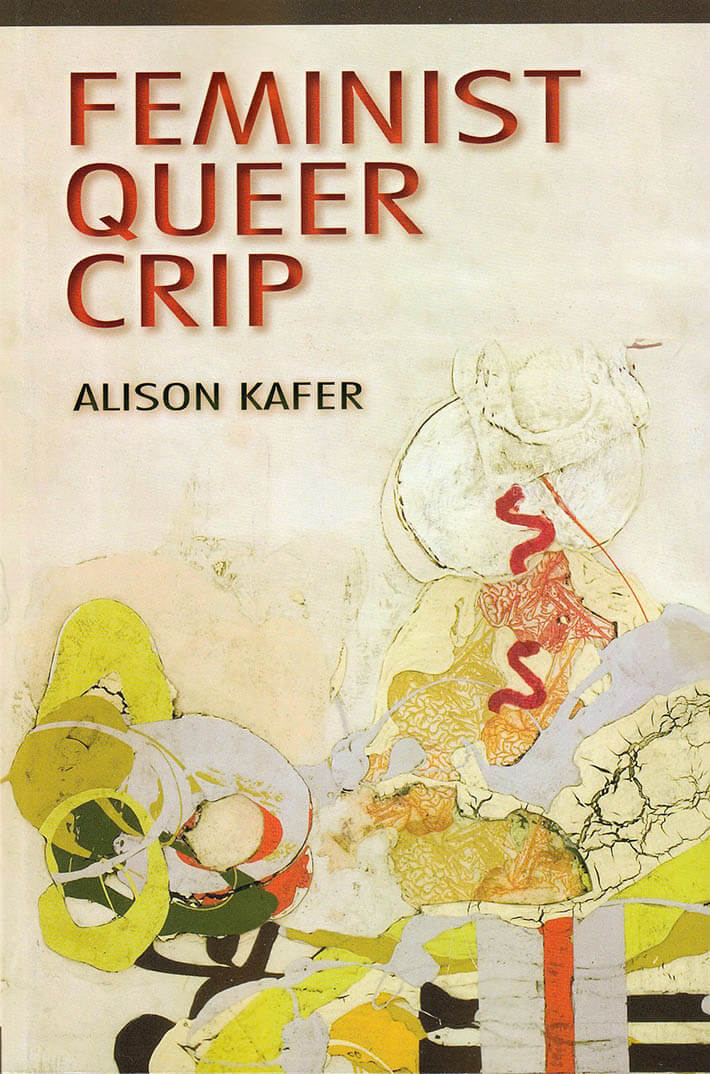
Feminist, Queer, Crip
In Feminist, Queer, Crip Alison Kafer imagines a different future for disability and disabled bodies. Challenging the ways in which ideas about the future and time have been deployed in the service of compulsory able-bodiedness and able-mindedness, Kafer rejects the idea of disability as a pre-determined limit. She juxtaposes theories, movements, and identities such as environmental justice, reproductive justice, cyborg theory, transgender politics, and disability that are typically discussed in isolation and envisions new possibilities for crip futures and feminist/queer/crip alliances. This bold book goes against the grain of normalization and promotes a political framework for a more just world.
Alison Kafer is associate professor of feminist studies, and is the author of Feminist, Queer, Crip (Indiana, 2013). Her work has appeared in a number of journals and anthologies, including Disability Studies Quarterly, Feminist Disability Studies, the Journal of Literary and Cultural Disability Studies, Sex and Disability, and South Atlantic Quarterly.
Published 2013.

Exquisite Mariposa
In the aftermath of a reality TV deal gone wrong, Fiona Alison Duncan asks the question, Can you rewrite your life? The answer, her debut novel Exquisite Mariposa, follows a cast of housemates as they navigate questions of art making and economies, breakups and breakdowns, and the internet and its many obsessions.
Given the initials F.A.D. at birth, Fiona Alison Duncan has always had an eye for observing the trends around her. But after years of looking for answers in books and astrological charts and working as a celebrity journalist to make rent, Fiona discovers another way of existing: in the Real, a phenomenological state few humans live in. Fiona's journey to the Real takes her to Koreatown, Los Angeles, where she sublets a room in La Mariposa. There, in the aftermath of a reality TV deal gone wrong, Fiona asks the question, Can you rewrite your life? The answer, her debut novel, Exquisite Mariposa, follows a cast of friends and lovers as they navigate questions of art making and economies, breakups and breakdowns, and the Internet and its many obsessions.
Fiona Alison Duncan is a Canadian American artist, writer, and organizer. She's the founding host of Hard to Read, a lit series, and Pillow Talk, community organizing on sex, love, and communication. She lives in New York and Los Angeles.
Published 2019
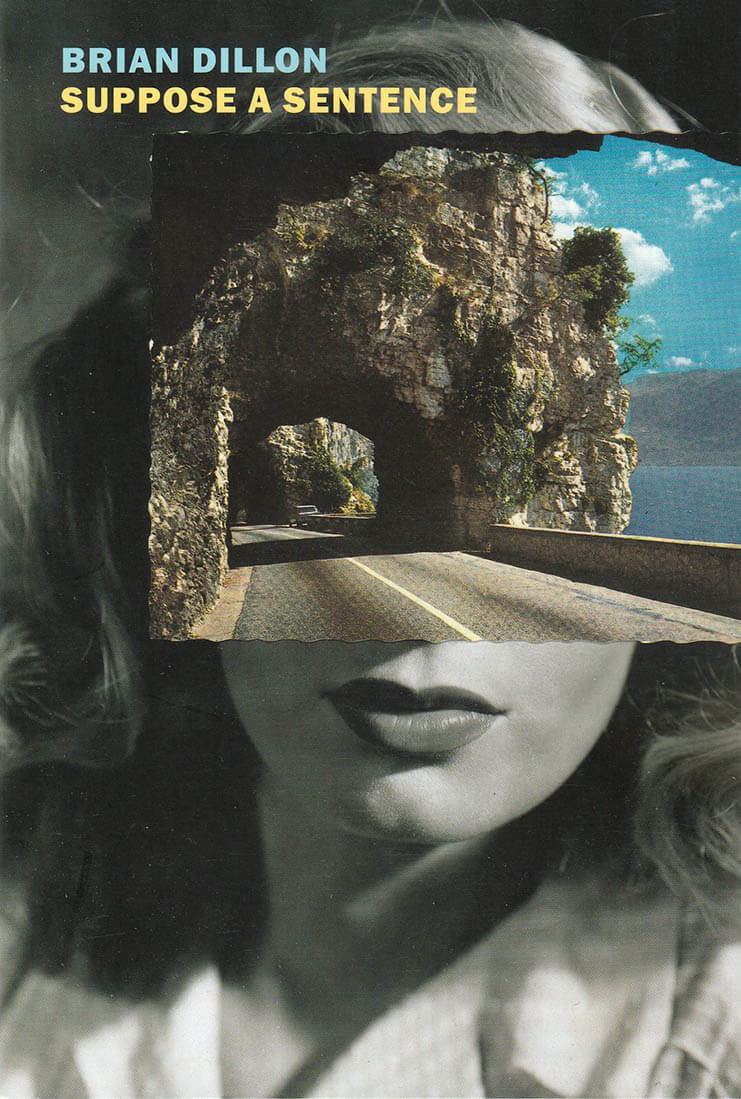
Suppose a Sentence
A captivating meditation on the power of the sentence by the author of Essayism, a 2018 New Yorker book of the year. In Suppose a Sentence, Brian Dillon, whom John Banville has called "a literary flâneur in the tradition of Baudelaire and Walter Benjamin," has written a sequel of sorts to Essayism, his roaming love letter to literature. In this new book Dillon turns his attention to the oblique and complex pleasures of the sentence. A series of essays prompted by a single sentence—from Shakespeare to Janet Malcolm, John Ruskin to Joan Didion—the book explores style, voice, and language, along with the subjectivity of reading. Both an exercise in practical criticism and a set of experiments or challenges, Suppose a Sentence is a polemical and personal reflection on the art of the sentence in literature. Whether the sentence in question is a rigorous expression of a state of vulnerability, extremity, even madness, or a carefully calibrated arrangement, Dillon examines not only how it works and why but also, in the course of the book, what the sentence once was, what it is today, and what it might become tomorrow.
Brian Dillon was born in Dublin in 1969. His books include The Great Explosion (short-listed for the Ondaatje Prize), Objects in This Mirror: Essays, I Am Sitting in a Room, Sanctuary, Tormented Hope: Nine Hypochondriac Lives, In the Dark Room, and with New York Review Books, Essayism. His writing has appeared in The Guardian, The New York Times, the London Review of Books, The Times Literary Supplement, Bookforum, Frieze, Artforum, 4Columns, and The Yale Review. He is the UK editor of Cabinet magazine and teaches creative writing at Queen Mary University of London.
Published 2020

The Woman Warrior: Memoirs of a Girlhood Among Ghosts
A classic memoir set during the Chinese revolution of the 1940s and inspired by folklore, providing a unique insight into the life of an immigrant in America. When we Chinese girls listened to the adults talking-story, we learned that we failed if we grew up to be but wives or slaves. We could be heroines, swordswomen. Throughout her childhood, Maxine Hong Kingston listened to her mother's mesmerizing tales of a China where girls are worthless, tradition is exalted and only a strong, wily woman can scratch her way upwards. Growing up in a changing America, surrounded by Chinese myth and memory, this is her story of two cultures and one trenchant, lyrical journey into womanhood. Complex and beautiful, angry and adoring, Maxine Hong Kingston's The Woman Warrior is a seminal piece of writing about emigration and identity. It won the National Book Critics Circle Award in 1976 and is widely hailed as a feminist classic.
Maxine Hong Kingston is the daughter of Chinese immigrants who operated a gambling house in the 1940s, when Maxine was born, and then a laundry where Kingston and her brothers and sisters toiled long hours. Kingston graduated with a bachelor’s degree in 1962 from the University of California at Berkeley, and, in the same year, married actor Earll Kingston, whom she had met in an English course. The couple has one son, Joseph, who was born in 1963. They were active in antiwar activities in Berkeley, but in 1967 the Kingstons headed for Japan to escape the increasing violence and drugs of the antiwar movement. They settled instead in Hawai‘i, where Kingston took various teaching posts. They returned to California seventeen years later, and Kingston resumed teaching writing at the University of California, Berkeley.
Published 1989
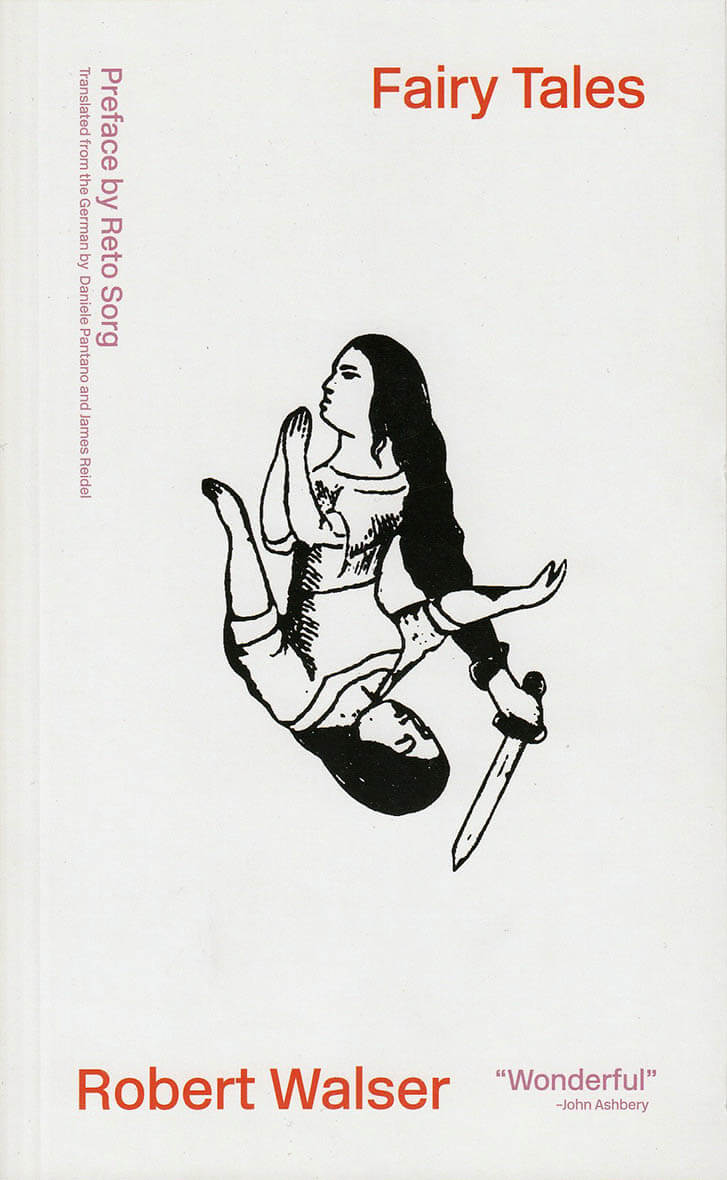
Fairy Tales: Dramolettes
Fairy Tales gathers the unconventional verse dramolettes of the Swiss writer Robert Walser. Narrated in Walser's inimitable, playful language, these theatrical pieces overturn traditional notions of the fairy tale, transforming the Brothers Grimm into metatheater, even metareflections.
Snow White forgives the evil queen for trying to kill her, Cinderella doubts her prince and enjoys being hated by her evil stepsisters; the Fairy Tale itself is a character who encourages her to stay within the confines of the story. Sleeping Beauty, the royal family, and its retainers are not happy about being woken from their sleep by an absurd, unpretentious, Walser-like hero. Mary and Joseph are taken aback by what lies in store for their baby Jesus.
Robert Walser (1878-1956) was born in Switzerland. He left school at fourteen and led a wandering and precarious existence working as a bank clerk, a butler in a castle, and an inventor's assistant while producing essays, stories, and novels. In 1933 he abandoned writing and entered a sanatorium—where he remained for the rest of his life. "I am not here to write," Walser said, "but to be mad."
Published 2015

A Bernadette Mayer Reader
A Bernadette Mayer Reader collects texts that were originally published in small press books and chapbooks, magazines, and anthologies. The book holds poetry and prose from Mayer’s earliest works to then-contemporary publications. From Story (1968), to excerpts from Desires of Mothers and Midwinter Day (1982), and including a cache of new poems, this is a sprawling, surprising collection of Mayer at her best.
The reader was met with praise from peers and critics alike. In the words of Jackson Mac Low, "[Mayer] never gets stuck in one place - she changes as the spirit moves her- and her structural inventions and self-revelations provoke surprise and delight."
Of the publication, Fanny Howe writes, "America could prove that her conscience, heart, and intelligence are still operating with this one volume of poetry."
Bernadette Mayer was born in Brooklyn, New York, in 1945. A most prolific poet, her first book was published at the age of twenty-three. Many texts later she continues to write progressive poetry from her home in East Nassau, New York. For many years Mayer lived and worked on the Lower East Side of Manhattan where she was the Director of St. Mark's Poetry Project from 1980-1984. Bernadette Mayer has received grants and awards from PEN American Center, The Foundation for Contemporary Performance Art, the NEA, The Academy of American Poets, and The American Academy of Arts and Letters.
Published 1992
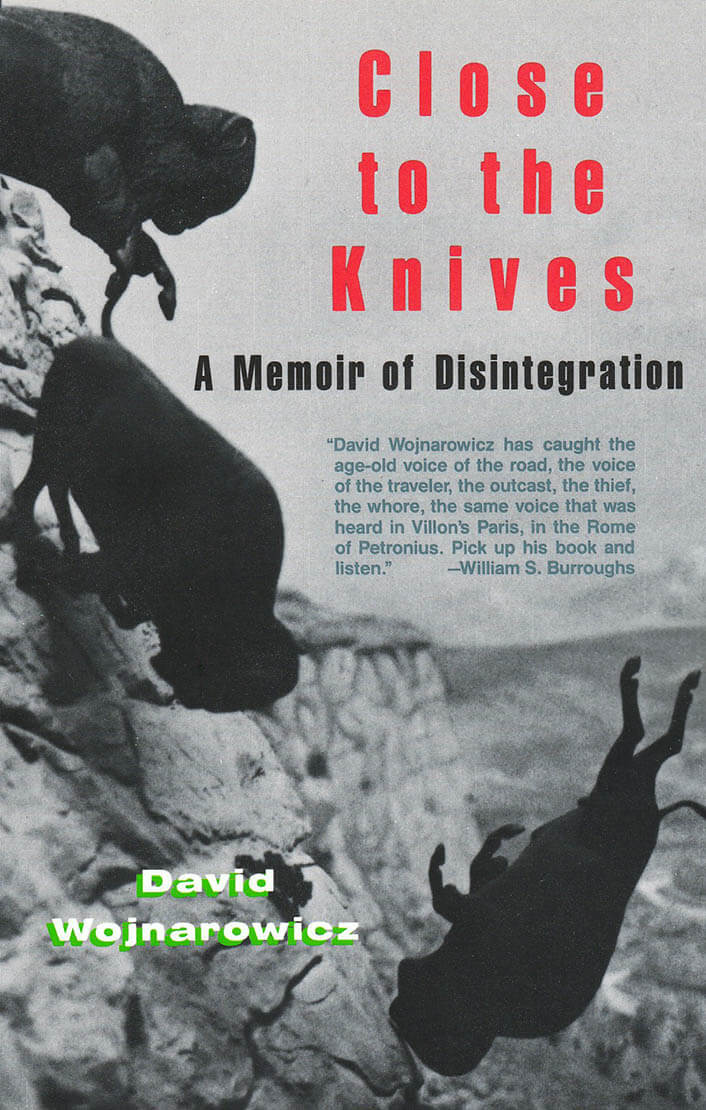
Close to The Knives
In Close to the Knives, David Wojnarowicz gives us an important and timely document: a collection of creative essays — a scathing, sexy, sublimely humorous and honest personal testimony to the "Fear of Diversity in America." From the author's violent childhood in suburbia to eventual homelessness on the streets and piers of New York City, to recognition as one of the most provocative artists of his generation — Close to the Knives is his powerful and iconoclastic memoir. Street life, drugs, art and nature, family, AIDS, politics, friendship and acceptance: Wojnarowicz challenges us to examine our lives — politically, socially, emotionally, and aesthetically.
David Wojnarowicz was an American painter, photographer, writer, filmmaker, performance artist, and AIDS activist prominent in the New York City art world. He was born on September 14, 1954. He died of AIDS on July 22, 1992.
published 1991